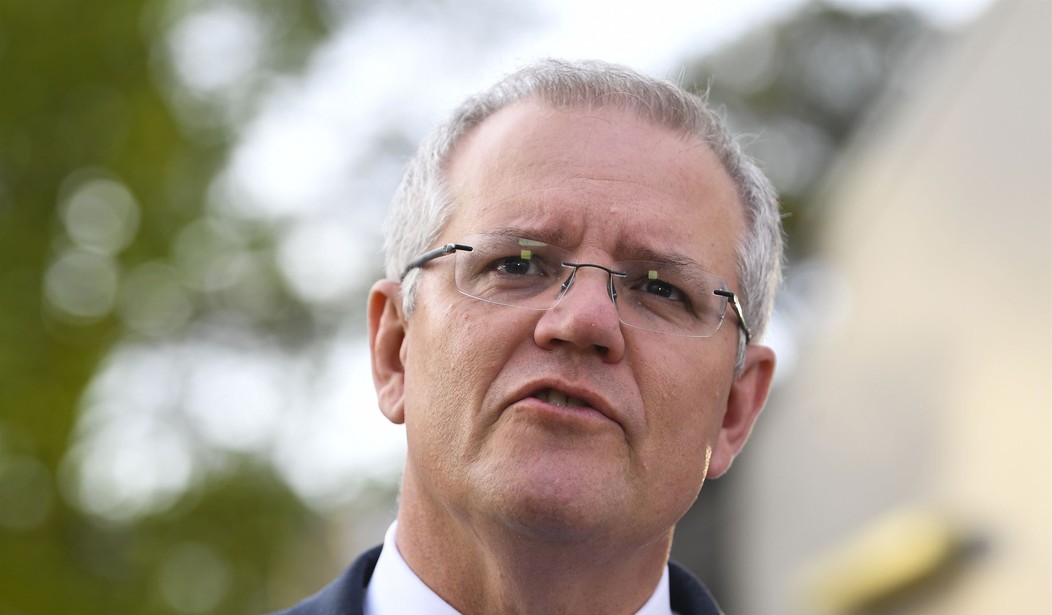NBC News had a curious analysis of the COVID situation in Australia yesterday, literally describing the nation’s current approach to the Omicron surge as a “let COVID rip” policy. We’ll address how accurate that description might be in a moment, but the numbers being produced in the land down under are similar to those in many other countries currently watching the Omicron variant spread like wildfire. After an extended period where Australians were locked down as if they were in a gulag, they finally hit their vaccination targets late last year and all but one of the Australian states largely loosened up their pandemic travel restrictions. Sadly, that was also the same time that Omicron washed ashore. Now their new case rate has jumped from roughly 1,000 per day to more than 100,000. Prime Minister Scott Morrison had already declared that the country was going to be able to “just live with” the virus. Did he speak too soon?
As Australia moved to change course on its pandemic strategy, the highly transmissible omicron variant hit. In just over a month, cases have risen from around 1,000 a day to more than 100,000 a day. Hallmarks of the pandemic that Australia mostly avoided began to emerge. The health system is buckling. Many supermarket shelves are bare as sick workers stay home.
Despite this surge in cases, most Australian states and territories are holding the line and allowing the virus to circulate in their communities, which critics have labeled the “let it rip” approach. But is it all bad news?
For much of the pandemic, Australia aimed for zero Covid cases, employing regular lockdowns (the country’s second-largest city, Melbourne, was in lockdown for more than 260 days) and extremely strict border policies. And it worked — the nation’s Covid mortality rate has been among the lowest in the world.
So yes, much as we’ve seen in the United States, the number of new cases each day has risen dramatically. But because we’re talking about Omicron, other patterns are also repeating. In a country with a population of nearly 26 million, they are averaging 50 deaths per day. And similar to the situation in America, Australia’s health officials can’t say for certain how many of those people died because of COVID and how many may have died from other causes but tested positive for the virus.
Australian infectious diseases expert Dr. Peter Collignon is quoted as saying that during the initial surge of COVID in 2020, for every 100 people who tested positive, one died. Thus far this year, that number is well below one in one thousand. The total number of deaths attributed to COVID in Australia to date is approximately 2,500. Compare that to the more than 846,000 who have died in America. When you parse those figures out based on total population, it works out to roughly 1 in 10,000 in Australia versus 1 in 400 in the United States, so they’re actually doing pretty well.
But as I mentioned above, this “let COVID rip” philosophy is a very recent development for Australians. I follow several unvaccinated Australians on social media and the stories they tell are quite different than what’s being described here. While they may not have been literally putting unvaccinated people into concentration camps, they came pretty close. (And they did set up internment camps for people coming into the country.) Unvaccinated people were only allowed to leave their homes to obtain food or medicine and walking outdoors outside of authorized times could get you put in jail. People were literally arrested for window shopping, and not all of those restrictions have gone away. Just this weekend, a cafe owner in Brisbane was handcuffed behind the counter of his own shop and hauled off to jail for failing to ask diners to show their proof of vaccination.
So don’t buy into the NBC News description of Australia embracing some sort of “let her rip” attitude toward COVID. They are far from that level of restoring social freedoms for their people. Here’s the video of the pub owner being arrested, just in case you have any doubts.








Join the conversation as a VIP Member